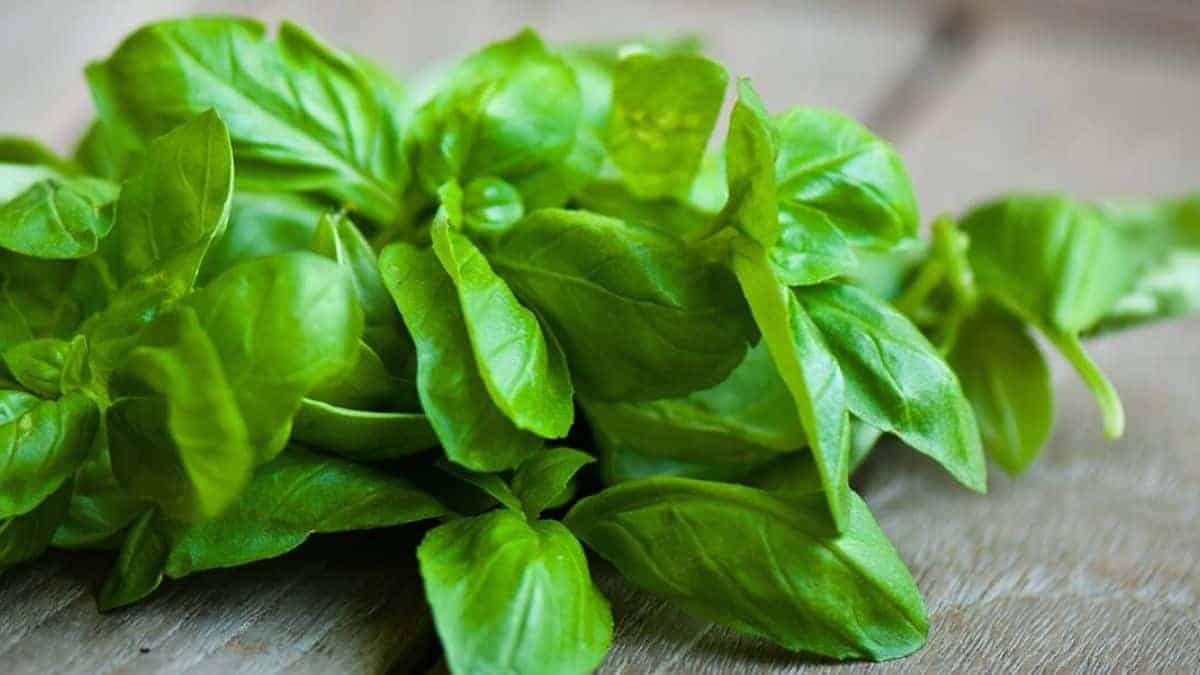Description
Basil is a culinary herb that is fragrant and sweetly aromatic, deeply ingrained in Mediterranean cooking. The plant grows to approximately 24 inches and is made up of tightly bunched veiny oblong leaves which have a bright green gloss, the delicate leaves range from 2 to 4 inches long and flower edible buds. The white flower buds should be cut back before they bloom to promote leaf growth and flavor.
What does basil taste like?
Basil herb often tastes sweet depending on the variety with a strong and characteristic robust flavor with a complex profile of pepper and sweet aniseed with a rich floral aroma similar to mint. One of the major characteristics which depend on basil not being heated is the freshness it brings to dishes. Dried basil tastes distinctly different from fresh but a flavor likened to curry and mint.
Basil Herb Uses
Basil herb is best used fresh, often as a garnish torn over pizza, salads, and tomato-based sauces. One of the most iconic uses of basil is in pesto, a sauce that makes use of some of Italy’s best ingredients. Basil herb, garlic, olive oil, parmesan cheese, and pine nuts are crushed to a paste to then be used as a sauce for pasta, loosened to dressing, as a marinade for meat and fish or on bruschetta.
Basil leaves are a popular garnish for Mediterranean dishes, or blended into sauces, pureed into soups, freshly sliced into pasta and salads, or infused into oils. The freshness of the herb also suits refreshing sweet recipes, particularly matched with strawberries and lemon. Strawberries, basil and balsamic is a variation which unexpectedly lifts each ingredient to create an ideal summertime dessert.
Basil Herb Substitutes
- Oregano: applicable in many recipes that require basil. Oregano is stronger in pepper and bitterness but will work well as a substitute in sauces.
- Spinach: if making pesto use spinach leaves as a replacement.
- Italian Seasoning: a herb mix of basil, marjoram, thyme, rosemary, and oregano which can be used in cooking and contains basil as an ingredient.
Compliments and Pairings
Mediterranean ingredients are classic accompaniments to basil including tomato, lemon, garlic, olive oil, aubergine, mozzarella, peach, pepper, avocado, chili, celery, nuts, onion, courgette, poultry, meat, pasta, mint, strawberries, eggs, oregano, thyme, and rosemary.
Expiration and Storage
Fresh: wrap fresh cut basil in a damp kitchen towel and place in the fridge, it will keep for up to three days.
Dried: no comparison to fresh basil as much of the aroma and profile is lost. The mint flavor is more pronounced and can be only recommended for use in marinades or sauces. Store-bought can be kept for up to six months.
Frozen: frozen at its peak the herb holds up well to be used in future sauces or dressing.
Where does basil herb come from?
Originating in India basil has now become the most popular herb in Italy. The name basil is derived from the Greek basileus meaning royal plant, holding symbolism to many cultures. A culinary herb of the mint family basil comes in many variations, including citrusy lemon basil and spicy Thai basil, this description focuses on the most popular ‘true basil’ also known as sweet basil. Basil grows well in moderate climates and it’s ease of growing makes it a popular choice for indoor herb growers. More nerdy details can be found on wikipedia.
Fun Facts
- Basil has been found in the tombs of Egyptian mummies as the herb was used in the embalming process.
- The herb is a symbol of love and fertility in Italy.
Popular Recipes
- Pesto
- Salsa verde
- Caprese salad
- Gazpacho
- Basil oil
- Cucumber, mint and basil cocktail
- Basil ice cream
- Spinach and basil stuffed pork tenderloin
- Broccoli basil cream soup
- Basil hummus
- Margherita Pizza
- Limoncello and basil cake

